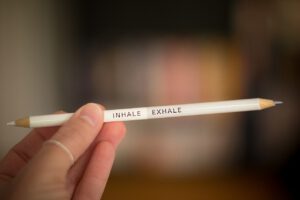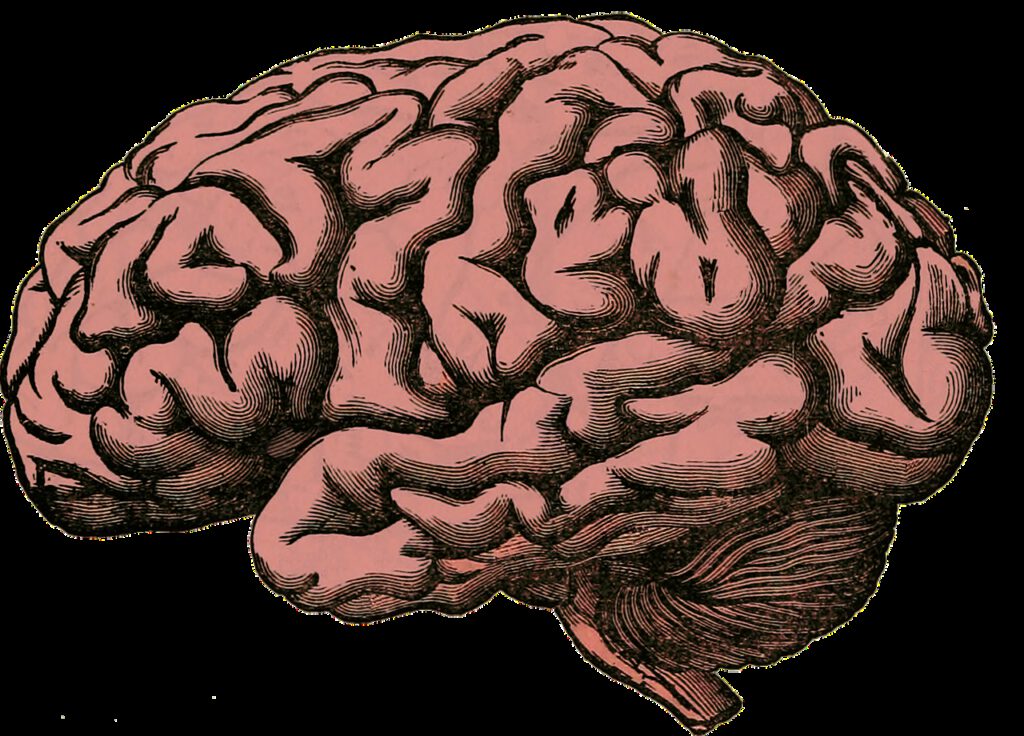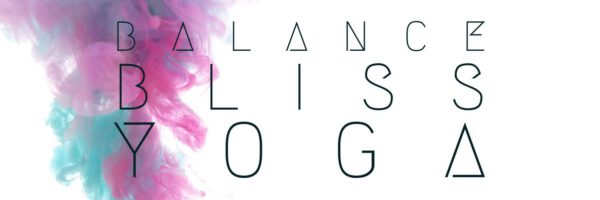Power of Pranayama: Nadi Shodhana
What is Nadi Shodhana (alternate nostril breathing)
Nadi Shodhana or alternate nostril breathing is one of the most commonly used Pranayamas. It involves alternate breathing through the left and right nostril with the other nostril being blocked. Usually it is done in cycles, which start with an inhalation through the left nostril while blocking the right nostril with the thumb of the right hand. Subsequently the left nostril gets blocked with the right pinky and ring finger while exhaling through the right nostril. Following that is the inhalation through the right nostril and, after blocking the right nostril again, exhalation through the left. This concludes one cycle and will be repeated for as long as planned.

Studies about Nadi Shodhana
Studies about Nadi Shodhana are mostly done at Indian universities and Ayurveda clinics. Most of them are randomized controlled trials with mostly relatively small numbers of participants. Often the participants are healthy, young, male and without yoga experience, frequently recruited from university students. The duration of breathing exercises varied between 10 and 45 minutes per day with a study duration between 5 days and six weeks. Depending on the study varying possible medical or clinical effects of Nadi Shodhana were evaluated. I would like to portray some selected studies here.
Possible effects of NADI SHODHANA
Nadi Shodhana and blood pressure
There are several studies which evaluated the effect of alternate nostril breathing on blood pressure. Many of them were able to show a reduction of systolic blood pressure after performing the breathing exercises, in some cases there was also a significant reduction of diastolic blood pressure. (1, 3, 7, 8). While some studies only examined healthy, mostly young volunteers (1, 3), others could also prove this effect on patients with hypertension (7, 8). Systolic blood pressure was lowered by about 5 mmHg in several studies (1, 7). This blood pressure reduction could also be seen in patients with experience in yoga (7). In most cases, those effects were only evaluated directly following the breathing exercises. It can be assumed, that blood pressure is lowered for the duration of the exercise and some minutes after, but potentially subsequently rises again (1).
The effect on blood pressure could be induced by an elevated parasympathetic activity during the breathing exercise (5). Other hypotheses include a reduced adrenalin release or a reduced sympathetic tonus due to an altered hypothalamic activity (a brain centrum which, amongst other things, controls some hormones and vegetative functions of the body) (3).


Nadi Shodhana and breathing
Some pulmonary functions, e.g., FEV1 (amount of air that can be exhaled in one second) and FVC (lung capacity) were improved after 4 weeks of daily alternate nostril breathing (2).
This could be due to training the involved muscles during the daily breathing exercises. Additionally, a bronchial dilation and reduction of bronchial mucus or the recruiting of non-used alveoli could play a role (2).
Nadi Shodhana, memory and coordination
A study which investigated right nostril breathing, left nostril breathing and alternate nostril breathing in three groups for 45 minutes daily was able to show that all three groups improved in memory tests (number recall, verbal and spacial). Interestingly the group using left nostril breathing even performed significantly better than both other groups.
A possible explanation would be stimulus transmission through the sympathetic nervous system and mechanic receptors to the hypothalamus, which are supposedly increasingly found in the mucosa of the left nostril (6). The data supporting this seems relatively thin to me.
This study unfortunately did not use a control group to exclude the possibility of this effect also existing after meditation without breathing exercise or similar practices (6).
There is also data showing improvement in bimanual coordination- and concentration tasks (Purdue Pegboard Score) (7).


Nadi Shodhana and anxiety
A test simulating public speaking showed no significant differences between experienced anxiety between a group performing alternate nostril breathing and a control group. However, there was a non-significant trend to slightly lower anxiety scores in the test group, possibly a bigger study (this one only involved 30 volunteers) would show a statistically significant difference (4).
Conclusion
Especially for reducing blood pressure and increasing parasympathetic tonus while performing Nadi Shodhana as well as a few minutes afterwards there are quite a few studies showing a positive effect. There seems to be no data concerning a long-term (e.g., whole day) blood pressure effect of the breathing exercises.
There also seems to be a possible improvement in lung function after daily practice of Nadi Shodhana.
Concentration- and Coordination tasks seem to improve directly after performing Nadi Shodhana.
For anxiety and memory in my opinion the data seems to be too weak to show a definite proof of improvement during aforementioned breathing exercises.
Sources
- Telles S. Blood Pressure and Heart Rate Variability during Yoga-Based Alternate Nostril Breathing Practice and Breath Awareness. 2014:184-193. doi:10.12659/MSMBR.892063
- Jahan I, Begum M, Akhter S, et al. Effects of alternate nostril breathing exercise on respiratory functions in healthy young adults leading stressful lifestyle. J Popul Ther Clin Pharmacol. 2020;27(March). doi:10.15586/jptcp.v27i1.668
- Article O, Jahan I, Begum M, et al. Effects of alternate nostril breathing exercise on cardiac functions in healthy young adults leading a stressful lifestyle. J Popul Ther Clin Pharmacol. 2020;27(June):68-77. doi:10.15586/jptcp.v27i2.675
- Kamath A, Urval RP, Shenoy AK. Effect of Alternate Nostril Breathing Exercise on Experimentally Induced Anxiety in Healthy Volunteers Using the Simulated Public Speaking Model : A Randomized Controlled Pilot Study. 2017;2017. doi:10.1155/2017/2450670
- Article O, Sinha AN, Deepak D, Gusain VS. Assessment of the Effects of Pranayama / Alternate Nostril Breathing on the Parasympathetic Nervous System in Young Adults. 2013;7(5):821-823. doi:10.7860/JCDR/2013/4750.2948
- Article O, Garg R, Malhotra V, Tripathi Y, Agarawal R. Effect of Left , Right and Alternate Nostril Breathing on Verbal and Spatial Memory. 2016;10(2):3-5. doi:10.7860/JCDR/2016/12361.7197
- Telles S, Yadav A, Kumar N, Sharma S, Visweswaraiah N, Balkrishna A. Blood pressure and purdue pegboard scores in individuals with hypertension after alternate nostril breathing , breath awareness , and no intervention. Med Sci Monit. 2013:61-66.
- Kalaivani S, Kumari M, Pal G. Effect of alternate nostril breathing exercise on blood pressure, heart rate and rate pressure product among patients with hypertension in JIPMER, Puducherry. J Educ Health Promot. 2019. doi:10.4103/jehp.jehp_32_19: 10.4103/jehp.jehp_32_19
